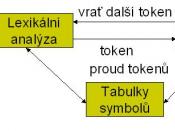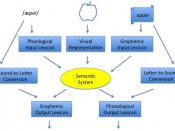Cohesion, according to Shi(2004), is ' the network of lexical, grammatical, and other relations which link various parts of text' (pp.1). These relations link sentences together and require us to understand there meanings by looking at other words or phrases in other sentences. Halliday and Hasan (1976) have identified a number of ways in which cohesion is achieved in written discourse in the English language. I will discuss four of these ways in this writing: co-reference, lexical relationships, ellipsis and conjunctive relations.
Co-reference
In semantics, this term refers to the relationship that exists between a word and what it represents in the real world (Shi, 2004). Here it has a pragmatic meaning, that is, the meaning of the word can only be interpreted from context (Fromkin, 2000). Look at the following examples:
1. John was injured in a car accident yesterday. He will be hospitalized for at least a week.
2. Did you see that, Mikey just swallowed a whole hotdog!
In these two examples the meaning of the words he and that cannot be determined semantically. We have to look at the surrounding words and expressions (i.e. the context) to see the he refers to 'John' and that refers to what Mikey has just done (i.e. swallowed a whole hotdog). In the first example, the meaning of he is determined by a previous sentence, whereas in example two the meaning of that is determined by looking at what follows. The first is an example of an anaphoric relationship and the second a cataphoric relationship (Mangubhai, 2003).
Lexical relationships
These are relationships between lexical items that are not cohesive in function, like pronouns in the previous section, but when associated with other lexical items, can have a cohesive relationship (Shi, 2004). This relationship can be due to synonymy, antonymy,


